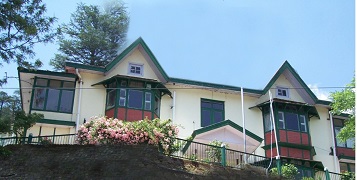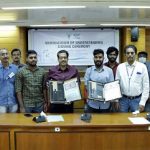Rusts are the most devastating disease of wheat. Among the rusts, leaf rust disease, caused by Puccinia triticina is present where ever wheat is grown throughout the world. It causes more loss than any other wheat rust. Losses to the tune of 50-70% due to leaf rust are reported under epidemic situations. Resistance is the most economic, cost effective and ecologically friendly way to manage wheat rusts. Hence there is a continuous search world over for identifying diverse sources of rust resistance. Most of the rust resistance genes identified during the last many years are genes with minor effects. While studying a local wheat collection for rust resistance at Indian Council of Agricultural Research-Indian Institute of Wheat and Barley Research, Regional Station, Flowerdale, Shimla, H.P., an interesting resistance pattern of leaf rust resistance was observed. The bread wheat.
landrace Hango-2, collected in 2006 from the Himalayan area of Hango, District Kinnaur, in Himachal Pradesh, exhibited a low infection type (IT;) at the seedling stage to all Indian P. triticina pathotypes, except the pathotype 5R9-7 which produced IT 3+. Pathotype 5R9-7(16-1) does not infect bread wheat cultivars, however, is virulent on tetraploid wheat Khapli. Pathotype 5R9-7 is not prevalent in nature for the last 15 years. Genetic analysis based on Agra Local/Hango-2-derived F3 families indicated monogenic control of leaf rust resistance, and the underlying locus was temporarily named LrH2. Bulked segregant analysis using 303 simple sequence repeat (SSR) markers located LrH2 in the short arm of chromosome 2D. An additional set of 10 chromosome 2DS-specific markers showed polymorphism between the parents and these were mapped on the entire Agra Local/Hango-2 F3 population. LrH2 was flanked by markers cau96 (distally) and barc124 (proximally). The 90 K Infinium SNP array was used to identify SNP markers linked with LrH2. Markers KASP_17425 and KASP_17148 showed association with LrH2. Comparison of seedling leaf rust response data and marker locations across different maps demonstrated the uniqueness of LrH2 and it was formally named Lr80.
This is the 5th rust resistance gene reported from India (others being Lr10, Lr48, Lr49, Lr57, and Lr58). Lr80, is being used to develop rust resistant genetic stocks and wheat varieties. It will help in creating diversity and management of leaf rust in India. The manuscript is appearing in Theoretical and Applied Genetic Research doi.org/10.1007/s00122-020-03735-5.






Comment here